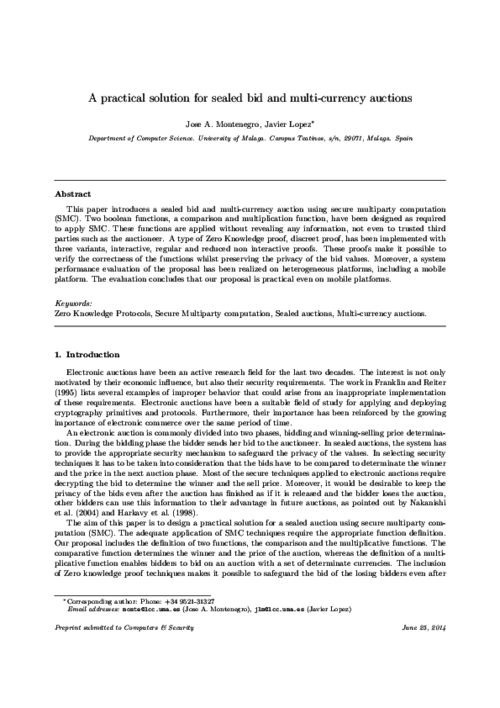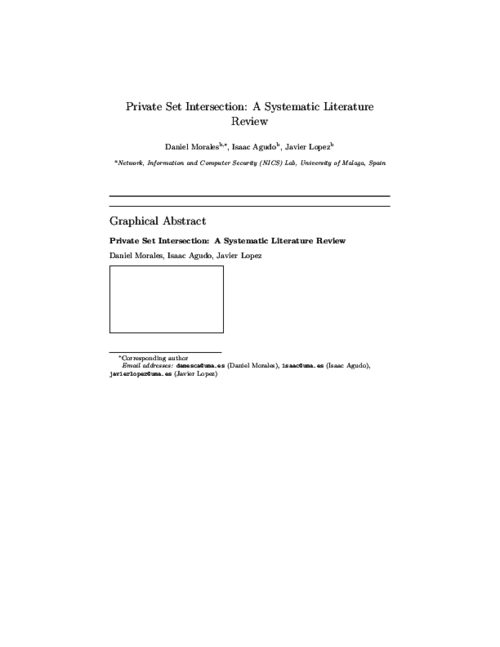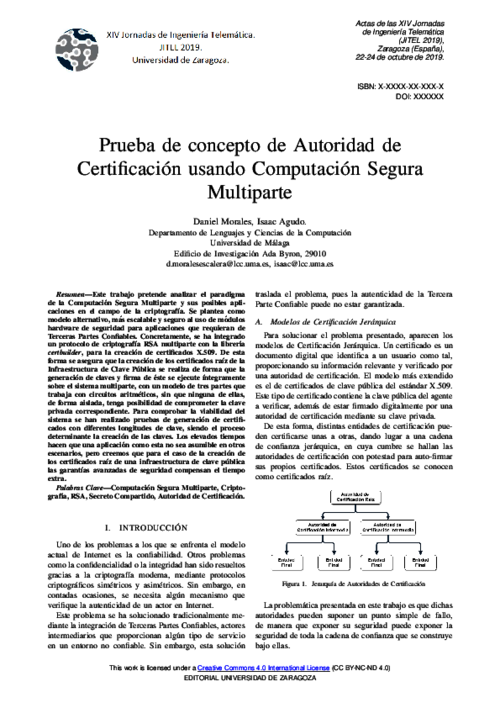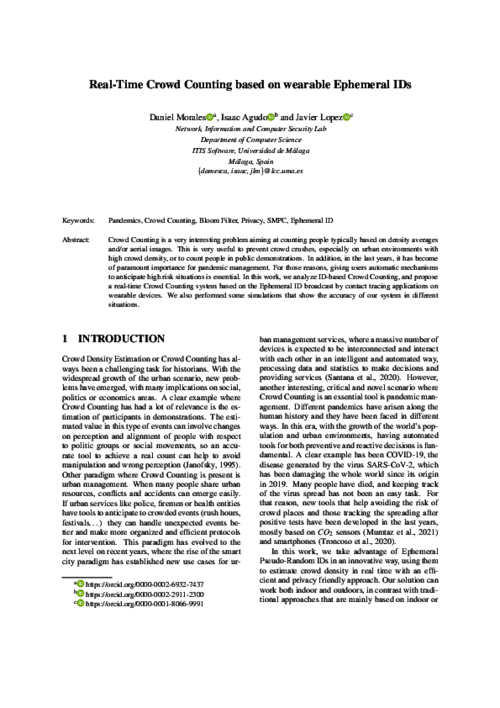 ] Type Year
] Type Year Computers & Security, vol. 45, Elsevier, pp. 186-198, 09/2014. DOI
Abstract
This paper introduces a sealed bid and multi-currency auction using secure multiparty computation (SMC).
Two boolean functions, a comparison and multiplication function, have been designed as required to apply SMC. These functions are applied without revealing any information, not even to trusted third parties such as the auctioneer. A type of Zero Knowledge proof, discreet proof, has been implemented with three variants, interactive, regular and reduced non interactive proofs. These proofs make it possible to verify the correctness of the functions whilst preserving the privacy of the bid values. Moreover, a system performance evaluation of the proposal has been realized on heterogeneous platforms, including a mobile platform. The evaluation concludes that our proposal is practical even on mobile platforms.

Computer Science Review, vol. 49, no. 100567, Elsevier, 05/2023. DOI
Abstract
Secure Multi-party Computation (SMPC) is a family of protocols which allow some parties to compute a function on their private inputs, obtaining the output at the end and nothing more. In this work, we focus on a particular SMPC problem named Private Set Intersection (PSI). The challenge in PSI is how two or more parties can compute the intersection of their private input sets, while the elements that are not in the intersection remain private. This problem has attracted the attention of many researchers because of its wide variety of applications, contributing to the proliferation of many different approaches. Despite that, current PSI protocols still require heavy cryptographic assumptions that may be unrealistic in some scenarios. In this paper, we perform a Systematic Literature Review of PSI solutions, with the objective of analyzing the main scenarios where PSI has been studied and giving the reader a general taxonomy of the problem together with a general understanding of the most common tools used to solve it. We also analyze the performance using different metrics, trying to determine if PSI is mature enough to be used in realistic scenarios, identifying the pros and cons of each protocol and the remaining open problems.

XIV Jornadas de Ingeniería Telemática, pp. 50-53, 10/2019. DOI
Abstract
Este trabajo pretende analizar el paradigma de la Computación Segura Multiparte y sus posibles aplicaciones en el campo de la criptografía. Se plantea como modelo alternativo, mas escalable y seguro al uso de módulos hardware de seguridad para aplicaciones que requieran de Terceras Partes Confiables. Concretamente, se ha integrado un protocolo de criptografía RSA multiparte con la librería certbuilder, para la creación de certificados X.509. De esta forma se asegura que la creación de los certificados raíz de la Infraestructura de Clave Publica se realiza de forma que la generación de claves y firma de este se ejecute íntegramente sobre el sistema multiparte, con un modelo de tres partes que trabaja con circuitos aritméticos, sin que ninguna de ellas, de forma aislada, tenga posibilidad de comprometer la clave privada correspondiente. Para comprobar la viabilidad del sistema se han realizado pruebas de generación de certificados con diferentes longitudes de clave, siendo el proceso determinante la creación de las claves. Los elevados tiempos hacen que una aplicación como esta no sea asumible en otros escenarios, pero creemos que para el caso de la creación de los certificados raíz de una infraestructura de clave pública las garantías avanzadas de seguridad compensan el tiempo extra.

19th International Conference on Security and Cryptography (SECRYPT 2022), Scitepress, pp. 249-260, 07/2022. DOI
Abstract
Crowd Counting is a very interesting problem aiming at counting people typically based on density averages and/or aerial images. This is very useful to prevent crowd crushes, especially on urban environments with high crowd density, or to count people in public demonstrations. In addition, in the last years, it has become of paramount importance for pandemic management. For those reasons, giving users automatic mechanisms to anticipate high risk situations is essential. In this work, we analyze ID-based Crowd Counting, and propose a real-time Crowd Counting system based on the Ephemeral ID broadcast by contact tracing applications on wearable devices. We also performed some simulations that show the accuracy of our system in different situations.
